It may be one of the world’s most photographed places, but there’s a LOT to know before tackling Arizona’s famed Antelope Canyon hike. From which canyon to visit (Upper or Lower) to choosing a tour operator, we break down all the important details in this trail guide.
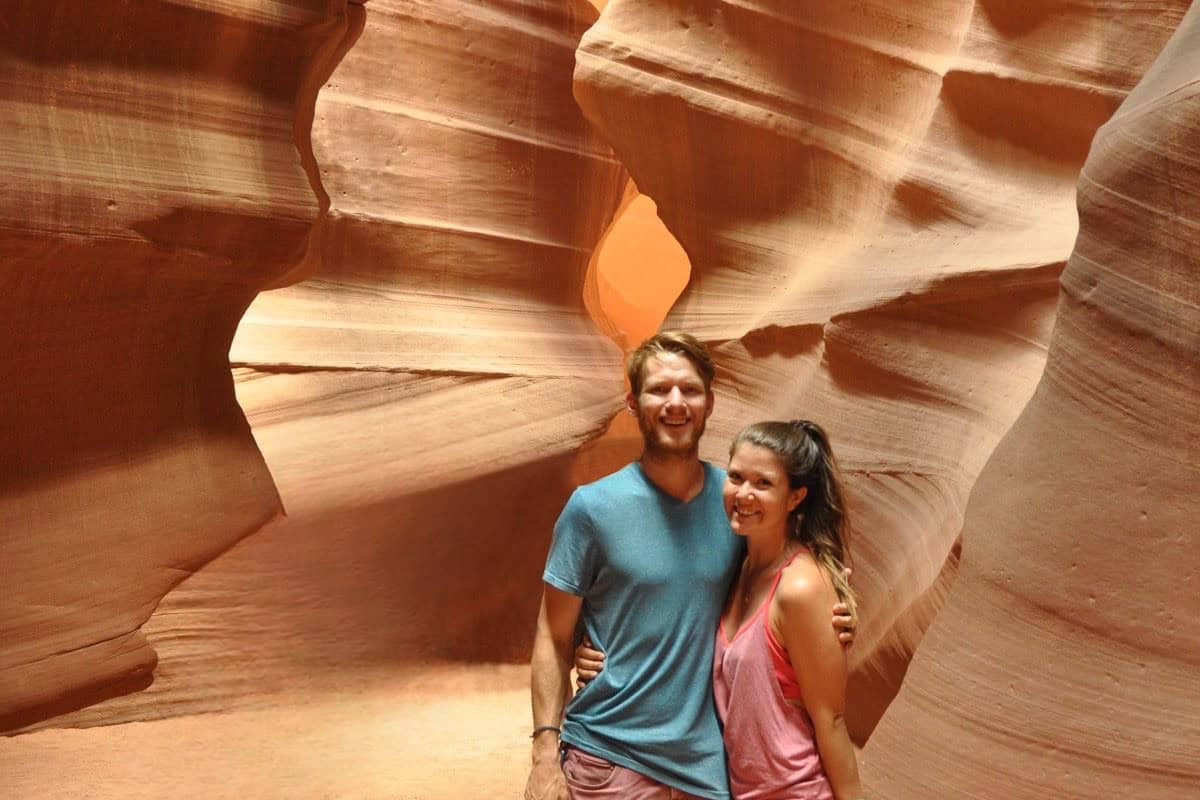
The dreamy, twisting, light-filtering slot canyons of Antelope Canyon draw visitors to the Arizona-Utah border from all over the world.
Understandably, just about everyone wants to do the Antelope Canyon hike. However, it’s not exactly straightforward.
Both canyons are in Lake Powell Navajo Tribal Park, part of the Navajo Nation, so access is limited and visitors are required to book a guided tour. Then there’s the important Upper vs. Lower Antelope Canyon decision.
This corner of the Southwest is also filled with other treasures like Horseshoe Bend, Lake Powell, and Grand Staircase-Escalante, so you could easily spend a week exploring!
Article Contents
- Antelope Canyon trail stats
- Hike overview
- Know before you go
- The route
- Tips for hiking Antelope Canyon
- Where to camp
- What to pack

Antelope Canyon trail stats

- Location: Page, Arizona
- Distance: 0.2 miles out and back (Upper), 0.6-mile loop (Lower)
- Elevation gain: Negligible in both canyons
- Difficulty rating: Easy
- Timing: about 2 hours
- Pets: Not allowed
- Permits: Booking a guided tour is required to go inside Antelope Canyon
- Upper Antelope Canyon trail notes
- Lower Antelope Canyon trail notes
Antelope Canyon hike overview
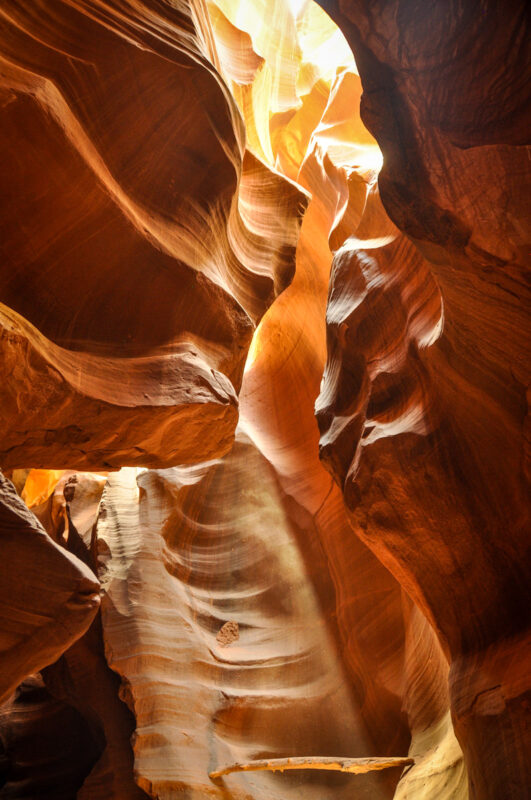
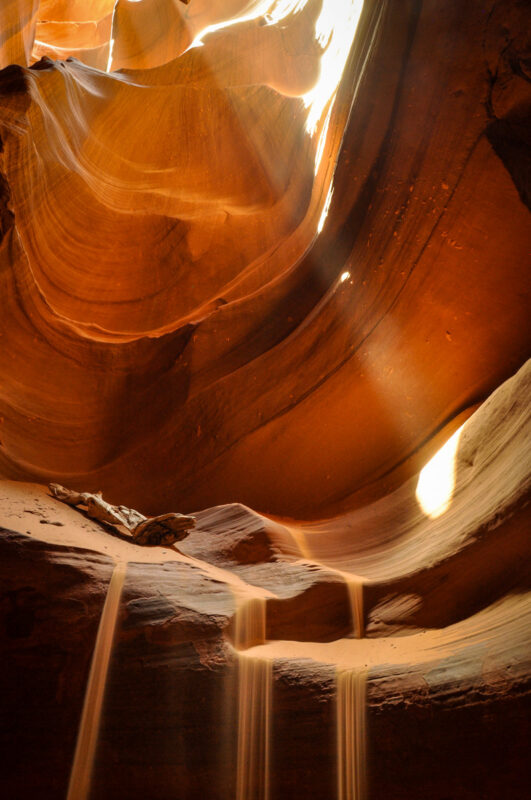
Antelope Canyon is well worth the trip, but it’s extremely important to clarify some things and manage your expectations from the outset.
First, the ONLY way to see Antelope Canyon—whether Upper or Lower—is on a guided tour. There is no such thing as a self-guided Antelope Canyon hike. Tours also book out months in advance, so you can’t simply show up and do the hike on a whim.
Speaking of upper or lower, you have to choose which canyon to visit. Different tour companies go to each of them, but not both, so unfortunately, there are no ‘combo’ tours.
Upper vs Lower Antelope Canyon
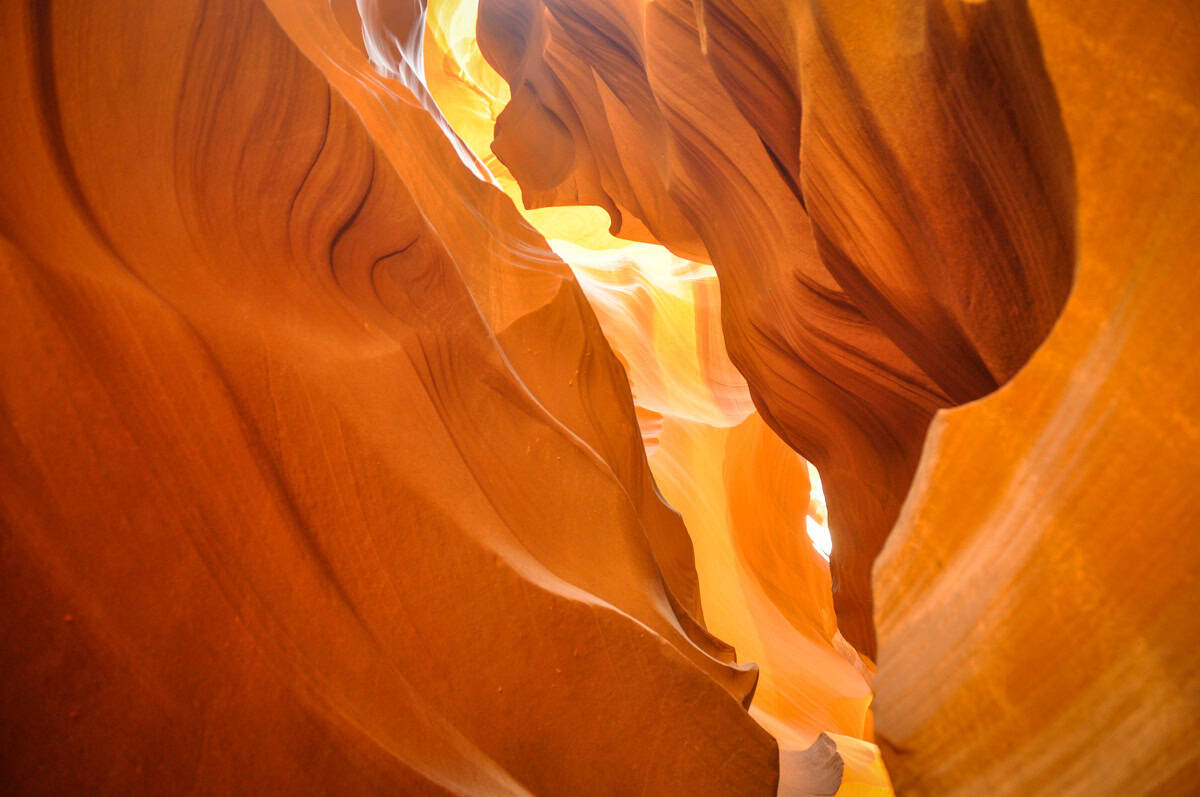
Upper Antelope Canyon is far and away more famous and popular (and crowded!) than Lower. This is largely because those iconic beams of light that filter down through the canyon are a phenomenon only found here.
The upper canyon is also more accessible. Its entrance is at ground level, and the entire path is flat. On the other hand, visitors have to descend down into Lower Antelope Canyon through cracks in the ground, using a series of metal ladders and staircases.
If anyone in your party has mobility issues, the upper canyon is a much better choice. Again, though, it’s also more crowded and expensive, and tours sell out well in advance.
The Navajo National Parks & Recreation website maintains a list of approved Antelope Canyon tour companies. They all offer near-identical experiences, so we recommend booking one with the best availability for your dates.
Keep in mind that booking the Upper Antelope Canyon hike doesn’t automatically guarantee you’ll see the light beams. They typically only occur for a few hours during mid-day in warmer months, so you have to choose the right time of year and day.
Honestly, both canyons are spectacular any time, all year. The shafts of light are especially great for photography, but you’ll get incredible pictures no matter when or where you visit.
Things to know before you go
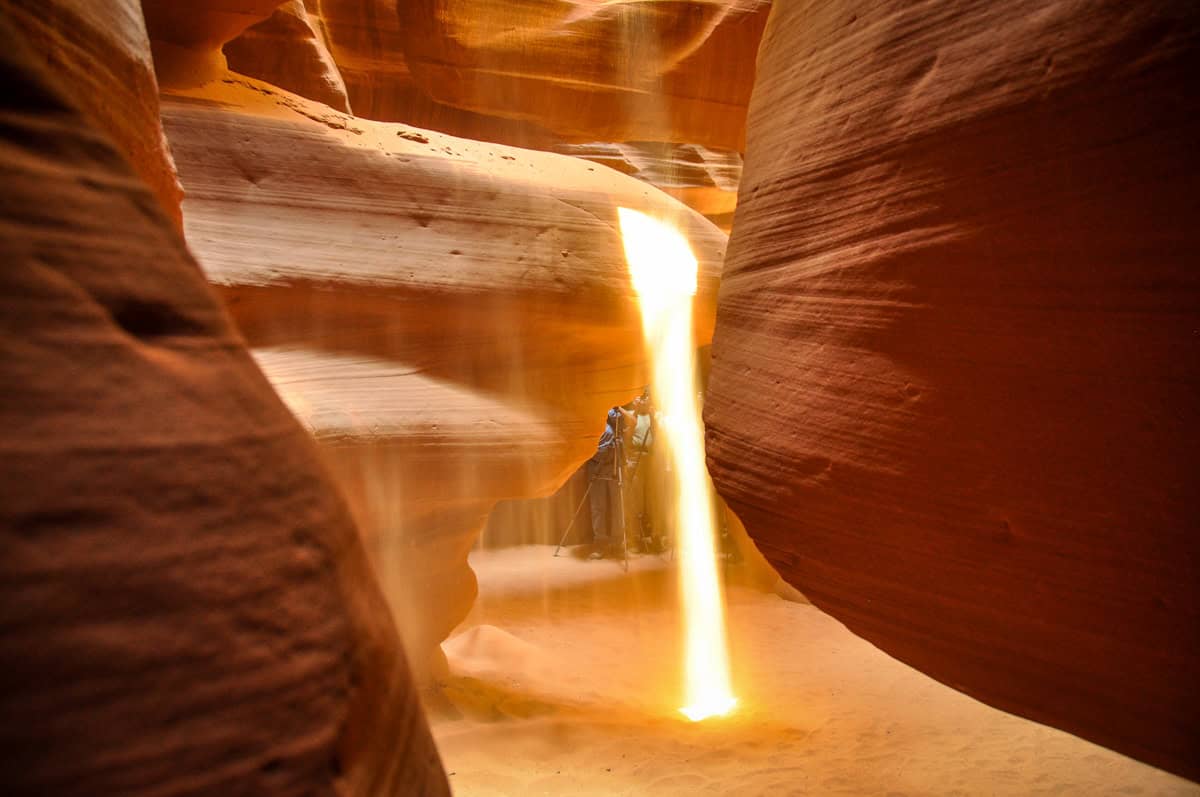
While Antelope Canyon is famous and bucket list-worthy for many reasons, there are several things to be aware of before heading out.
If you go into the experience with these things in mind, you’ll have an amazing time!
Best time of year for the Antelope Canyon hike
If your heart is set on seeing the famed Antelope Canyon light beams in the upper canyon, aim to visit mid-day, spring through fall.
Because the sun has to be directly overhead to create the right conditions, you want a clear, sunny day. The optimal tour times are 10:30-1:30.
For anyone visiting the lower canyon or whose priority isn’t the light shafts, plan your Antelope Canyon hike around the mildest weather and least crowded times.
There’s honestly no ‘low’ season, but winter is slightly less busy. Also, early morning and evening tours tend to be a bit less popular year-round. These times are typically a few dollars cheaper, also.
How long does it take to hike Antelope Canyon?
Plan on about two hours total for the Antelope Canyon hike, whether you visit the upper or lower canyon. This includes drive time and 1-1.5 hours at the canyon itself.
How difficult is the Antelope Canyon hike?
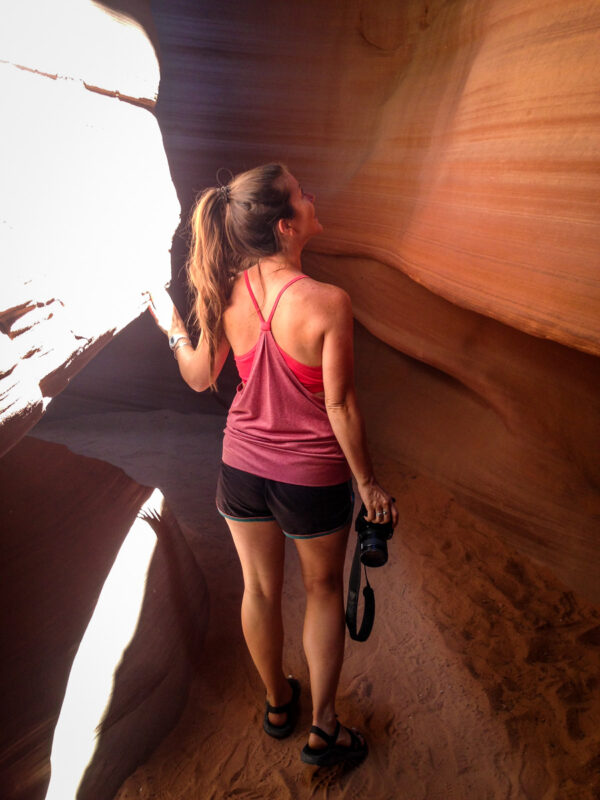
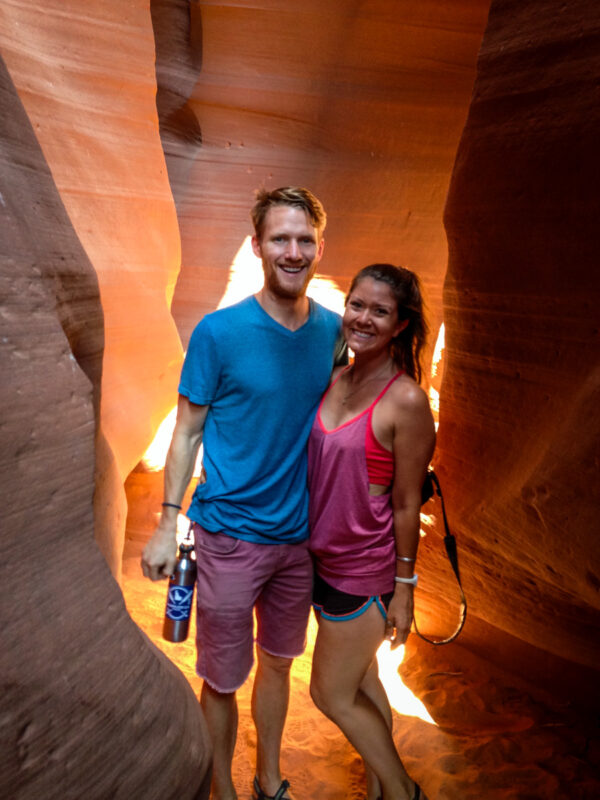
Both Antelope Canyon hikes are easy, but Upper Antelope Canyon is even easier. The entire walk is level, and you walk right into the mouth of the slot canyon at ground level.
At Lower Antelope Canyon, you’ll descend some stairs to get below ground, and there are some boulders and other uneven terrain to navigate. It’s still solidly on the easy side, but slightly more challenging than the upper canyon. Lower is also not suitable for anyone with mobility concerns.
Obtaining a permit for your Antelope Canyon hike
You technically need an $8 entry permit to visit Antelope Canyon, but all approved outfitters include this in their guided tours, so you don’t have to get anything extra.
Tour prices vary from about $85-120 per person for the upper canyon, while Lower Antelope Canyon tours start at $55. In both cases, guides typically offer a small discount on the earliest and latest tours of the day.
Note that ultra-popular mid-day tours of Upper Antelope Canyon are almost always priced higher, and they book out several months in advance.
Photographing Antelope Canyon
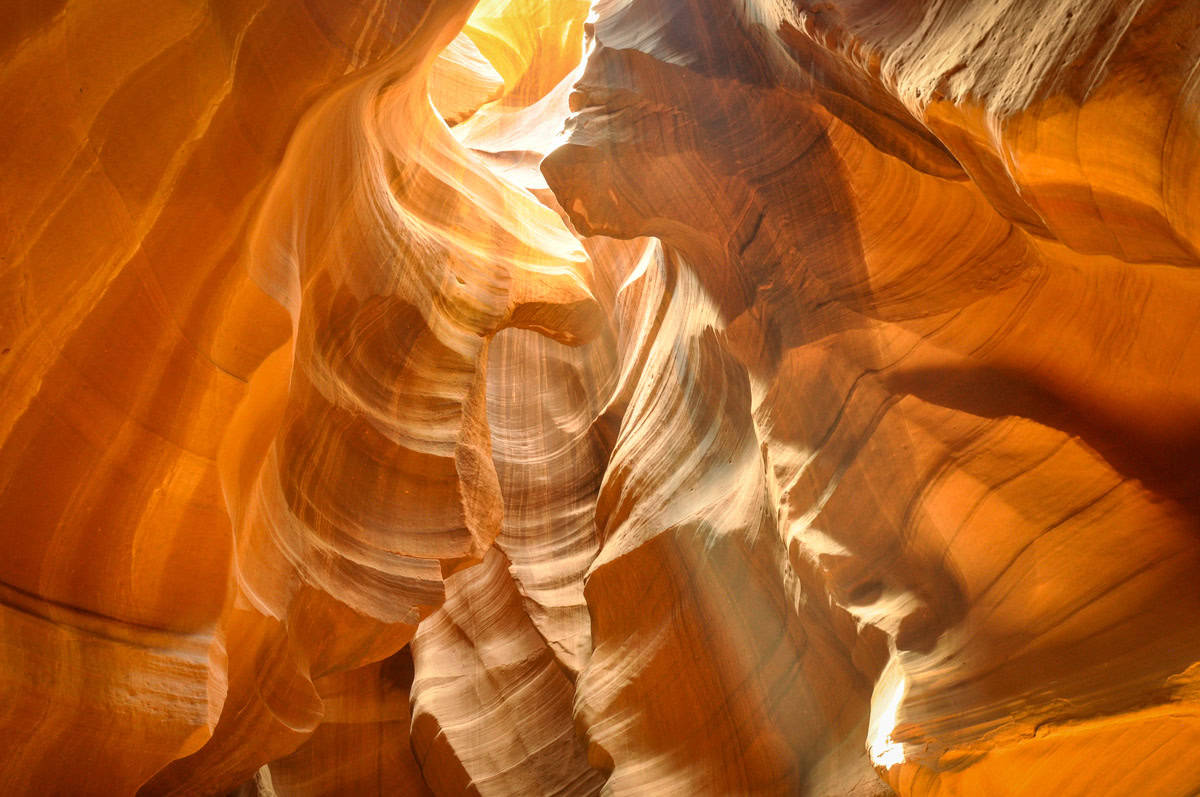
The Antelope Canyon hike is much more a photo op. Depending on your specific tour, you may barely go into the canyon, wait your turn in line to snap photos, then go back the way you came. Even on longer tours, there are enough stops that it doesn’t feel like hiking.
Only a handful of companies offer tours, but they all run multiple times a day, year-round, so Antelope Canyon gets CROWDED. This is one of the biggest surprises for first-time visitors (especially since all the photos make it look like the canyon is empty!).
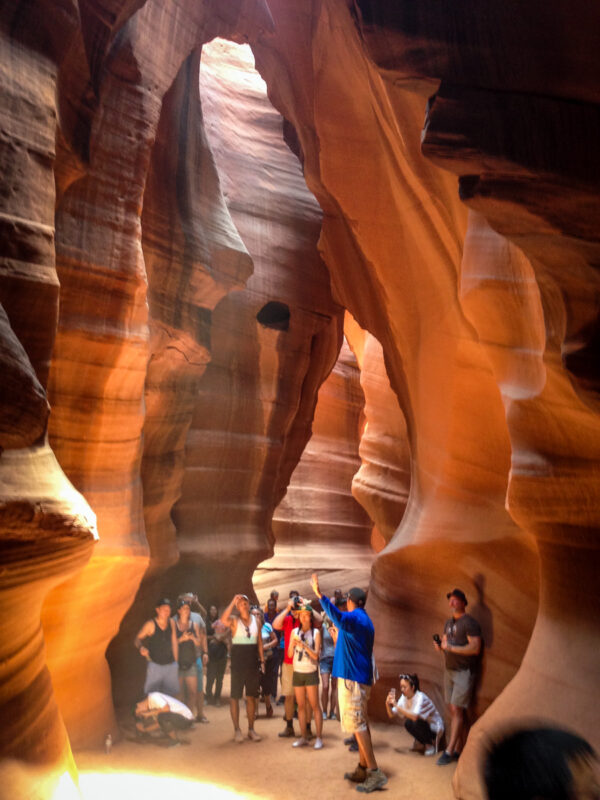
As many as eight groups may be inside at once, but the outfitters do a great job managing the traffic flow. They devised a system where groups walk ahead of one another at timed intervals, so everyone has a chance to get photos without others in the background.
With that said, you’ll have an extremely limited amount of time to snap pictures. Get your camera settings dialed in ahead of time, and abandon the idea that you’ll be able to switch lenses. Also, you cannot bring tripods or selfie sticks inside.
The crowds and waiting can be frustrating, but think about what a zoo the canyon would be if it weren’t managed!
Plus, the guides know Antelope Canyon better than anyone—they know the most unique rock formations, exactly where to stand, and tips for getting epic photos. They usually even help stage coveted photos, like sand streaming down the canyon walls.
The route

We broke down the route for the Antelope Canyon hike into parts to give you an idea of what to expect on the trail.
All tour operators have guests meet at their office, either in Page, AZ, or at the entrance to the tribal park. Arrive early and factor in time to go over expectations and sign waivers.
Regardless of whether you visit the upper or lower canyon, you’ll take private dirt and sand roads to get there. You may even drive directly through a sandy wash. Bring a face mask or gaiter to minimize how much sand gets into your nose and mouth.
Hiking to Upper Antelope Canyon
Your guide will drive everyone into the Navajo Tribal Park in an off-road vehicle. After the 2-mile drive through a riverbed, you’ll be dropped off at the mouth of the canyon. It’s just an easy, flat 0.3-mile walk from here.
Lower Antelope Canyon hike
Unlike upper canyon tours, guests drive themselves to the Lower Antelope Canyon and walk. There is no driving portion of the tour.
For the Lower Antelope Canyon hike, there’s a slightly longer 0.5-mile walk involved and the canyon entrance is underground.
You’ll climb up and down a handful of staircases, and the lower canyon is also much narrower inside. It’s still not difficult or technical, but it isn’t quite as easy as Upper Antelope Canyon. Many people call Lower the “fun” canyon.
Tips for hiking Antelope Canyon
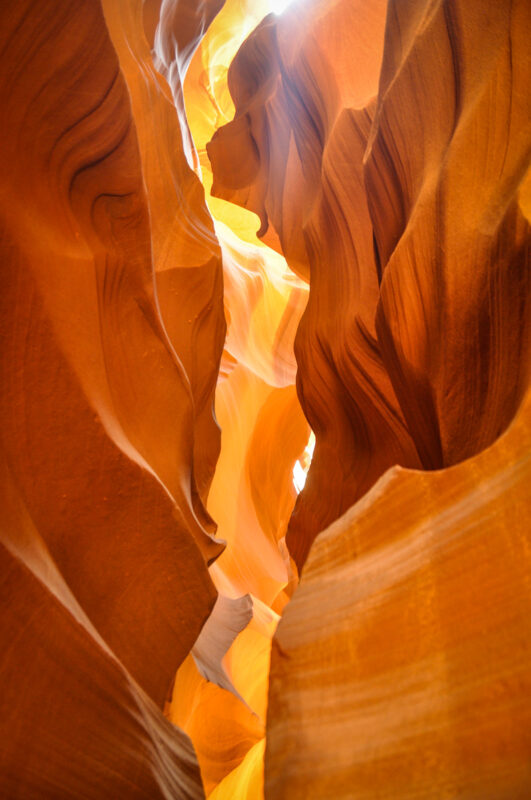
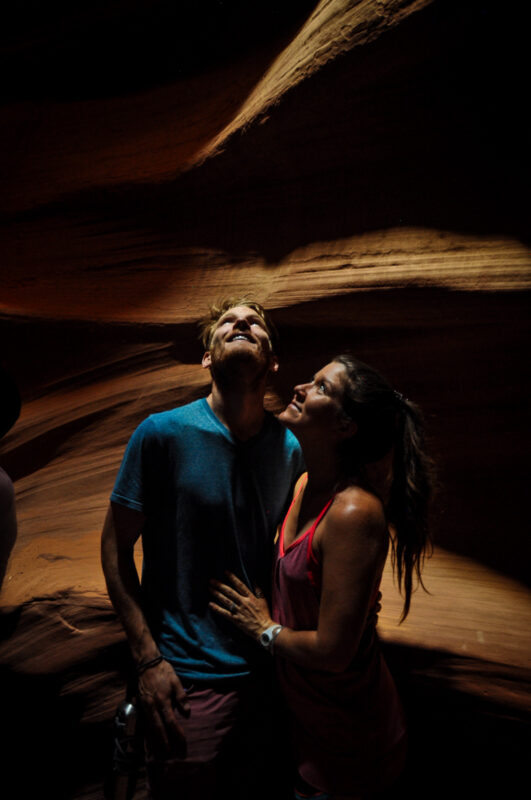
- Manage your expectations. Our number one tip for making the most of your Antelope Canyon visit is to be realistic about what to expect. Go in knowing it will be crowded, and that you may not see the elusive beams of light.
- Double-check the timezone. Arizona doesn’t observe Daylight Savings Time, but the Navajo Nation does. Most Antelope Canyon tours depart from Page, in Arizona time, but it’s a good idea to verify the correct meeting time with your tour operator.
- Don’t bring a bag or tripod. They’re generally prohibited—even small belt bags—to free up as much room in the canyon as possible. Check your tour company’s FAQs to verify exact restrictions.
- DO bring your camera, water, and a good hat. Sand is everywhere in Antelope Canyon, and more continuously drifts in from the top. Wear a hat and put your camera around your neck, but bring a case to protect it from tiny granules of sand.
- Look up! With the canyon being perpetually crowded, you have to get a bit creative to get amazing photos. One way to do that is by pointing your camera up toward the sky.
- Wear a gaiter or mask for the drive to the canyon. The roads are sandy, and most outfitter vehicles are open-air, like Jeeps. Unless you enjoy the taste of sand, you’ll want some sort of face protection.
- Bring cash to tip your tour guide. This isn’t mandatory, but it’s highly encouraged and certainly appreciated. $10-20 per couple/group is appropriate, assuming you’re happy with your guide.
- Page makes a perfect basecamp. It’s a small city, but caters to tourists, so you’ll find tons of restaurants, hotels, grocery stores, gas stations, and a Wal-Mart.
Where to camp near Antelope Canyon
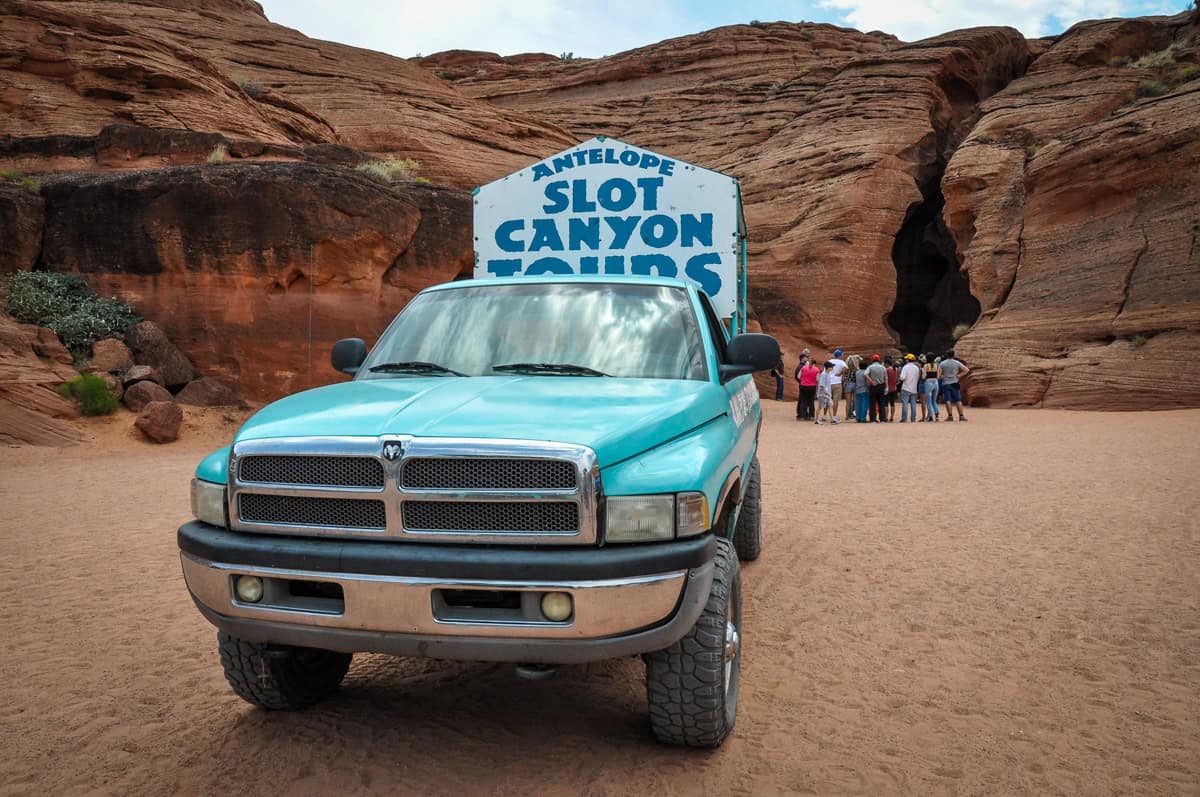
One of the best things about the Southwest is the abundance of public land. Lots of public land means lots of epic camping opportunities.
Antelope Canyon is near the enormous Glen Canyon National Recreation Area and ‘Arizona Strip’ BLM land (well over one million acres!), so there’s a TON of dispersed camping.
Camp on a ledge overlooking Lake Powell, at a sandy beach along the Colorado River, or in the middle of the desert!
Prefer camping with a few more amenities? Here are some of the best campsites near Antelope Canyon.
- Wahweap RV & Campground: at the Wahweap Marina, with wi-fi, coin-operated showers and laundry, and access to the marina’s restaurant and boat rentals
- Page Lake Powell Campground: six miles from Antelope Canyon, with amenities including a gym, indoor pool and hot tub, shower house, and playground.
We love and frequently use The Dyrt app to search for the best campsites in a specific area.

Try their Pro Membership for FREE for 30 days and gain access to the offline version of the app, utilize their trip planning feature AND get exclusive discounts on campsites and gear!
What to pack for the Antelope Canyon hike
- Navigation: we recommend using Alltrails+ to download the offline trail map
- Get your first week of using Alltrails+ for FREE when you sign up using our link!
- Permit**
- Hiking daypack
- Water bottles and/or bladder for your Camelbak
- Sun protection: sunscreen, hat, sun glasses
- Headlamp (if hiking near dawn or dusk)
- Camera/tripod (this one’s our favorite for hiking)
- Hiking layers (here is a great resource if you’re wondering what to wear hiking)
- Comfortable hiking boots or shoes
- Plenty of snacks: check out our favorite hiking snacks here!
**Don’t forget to pack your permit!
Be sure to download our FREE hiking packing list before your next trip and never leave another essential behind again!
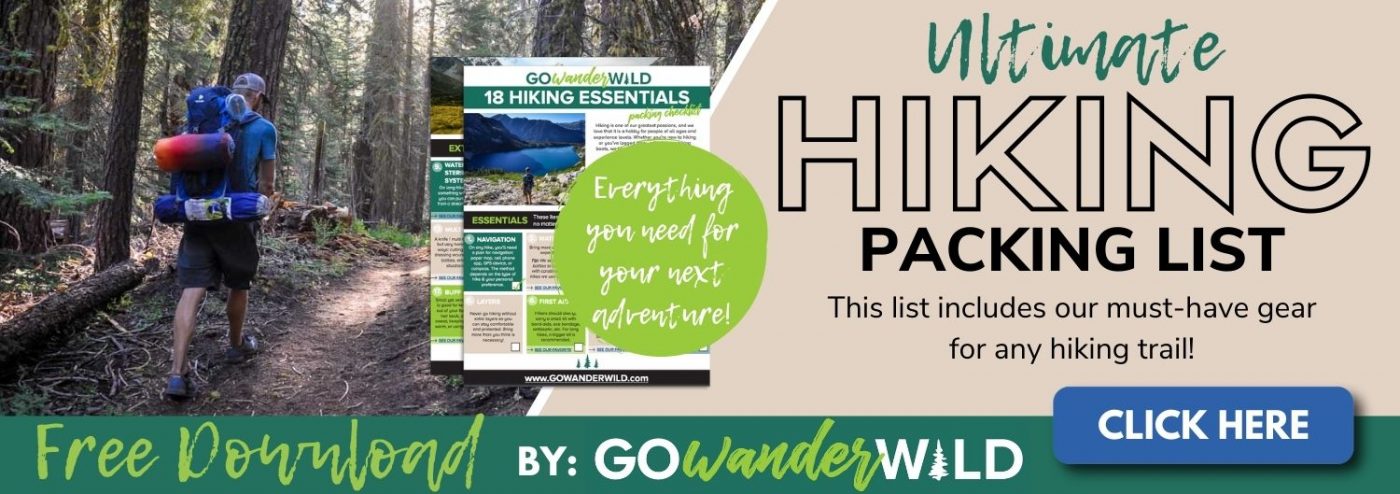

You may also like…
- Havasu Falls Hike: Havasupai, Arizona Trail Guide
- Best Hikes in Sedona, Arizona for All Levels
- What to Wear Hiking in Every Season
- Best Hiking Snacks: Healthy & Delicious Trekking Food
Save this article on Pinterest for later!
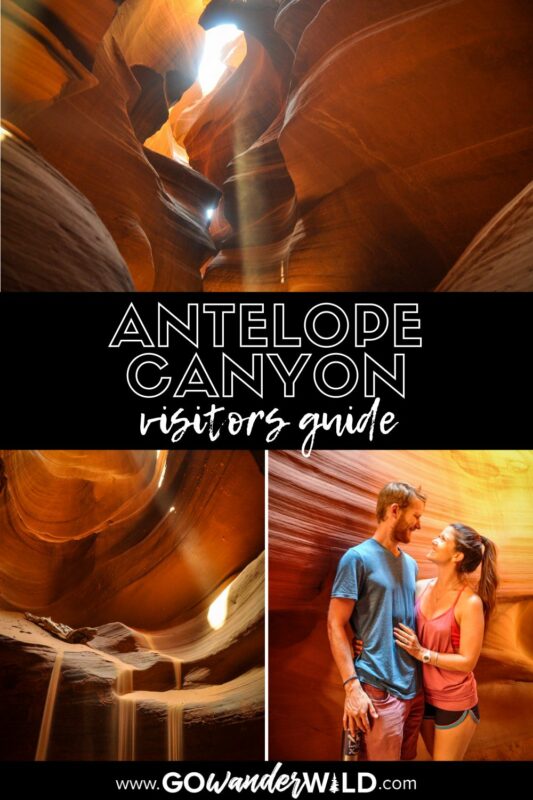
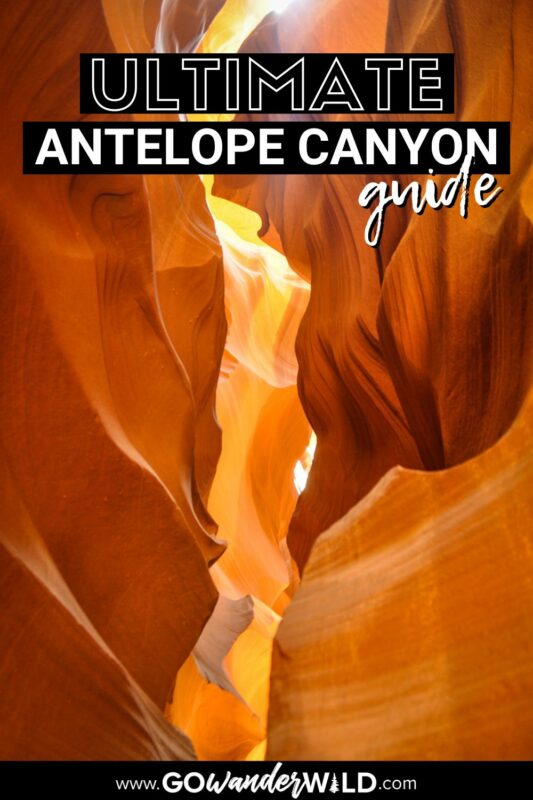
We want to hear from you!
Have you done the famous Antelope Canyon hike in Arizona? What was your experience like? Are you planning a trip to Arizona for hiking and want more advice? Comment below and let us know!

